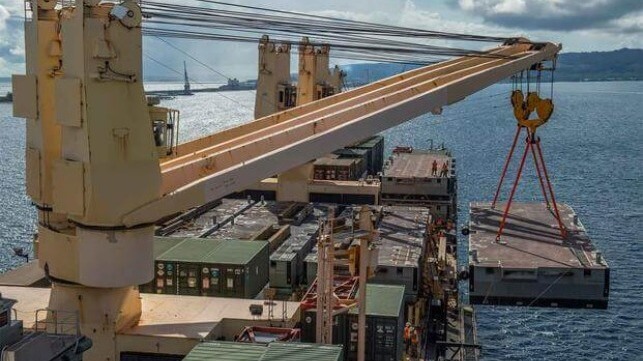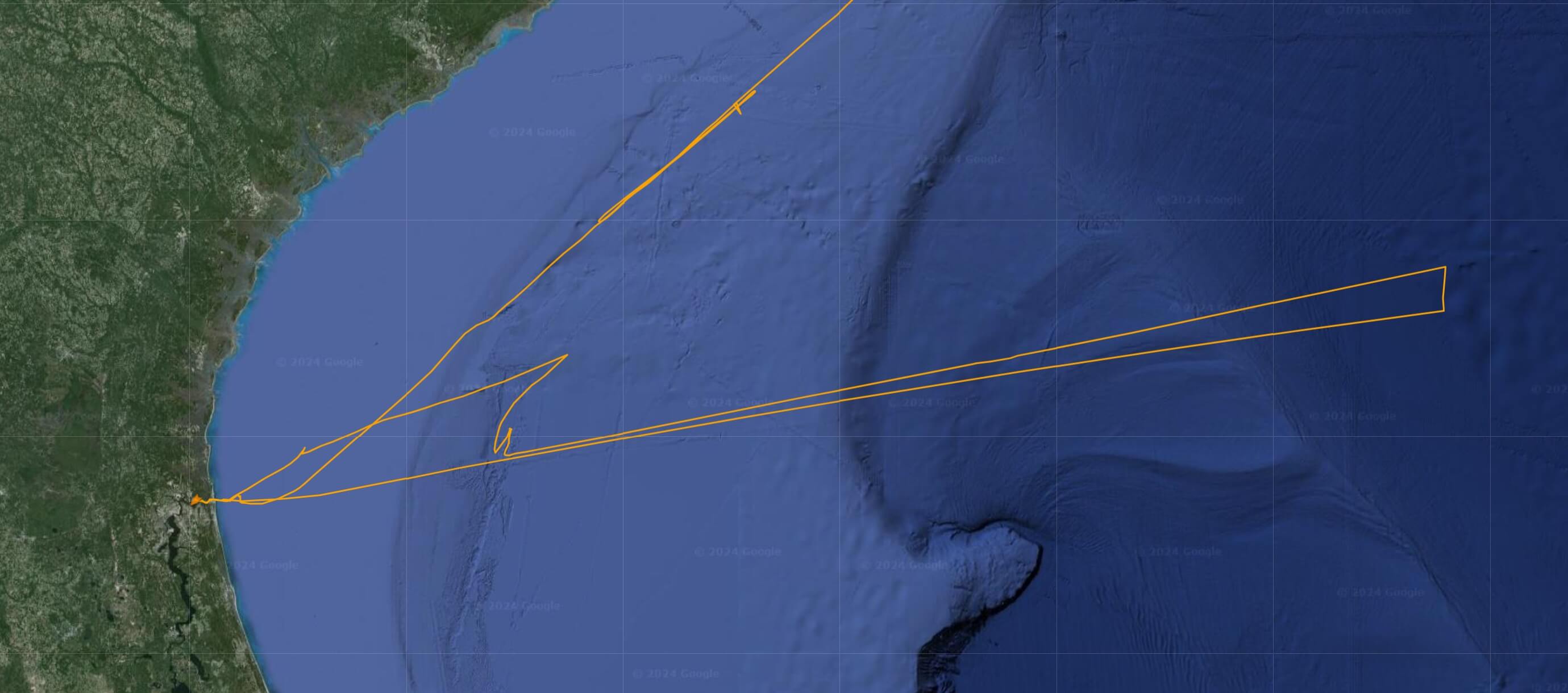Sealift Ship for Gaza Corridor Turns Around After Engine Room Fire

The MSC logistics ship carrying supplies for the White House's planned Gaza aid mission has sustained an engine room fire and returned to the United States, according to the U.S. Navy.
USNS 2nd Lt. John P. Bobo - a ro/ro cargo ship operated by Military Sealift Command - had an engine room fire break out on April 11, the Navy said. No crewmembers were injured in the accident, and the fire was quickly put out with extinguishers. The Bobo turned around and headed for Jacksonville, Florida, loitering off the coast on the 14th-15th and arriving on the 16th. The setback was announced on the 18th.
 USNS Bobo's trackline: a transit from Norfolk to Jacksonville; east-northeast to cross the Atlantic; back to Jacksonville at a slow bell, with a brief diversion on the return (Pole Star)
USNS Bobo's trackline: a transit from Norfolk to Jacksonville; east-northeast to cross the Atlantic; back to Jacksonville at a slow bell, with a brief diversion on the return (Pole Star)
The U.S. aid corridor for Gaza was supposed to go into operation within a few weeks' time, but its status and timeline are now unknown. The Bobo was carrying pontoons for a floating lighterage system, which was central to the delivery plan.
The Pentagon has yet to provide clarification about how the engineering casualty will affect the mission. The five U.S. Army landing ships that were dispatched to support the operation have reached the Mediterranean or are getting close, according to USNI. AIS data shows that the two other sealift ships carrying equipment for the mission - USNS 1st Lt. Baldomero Lopez and Roy P. Benavidez - are under way near Crete.
The UN, NGO aid groups and others have raised questions about the need for the floating pier, since commercial seaports near Gaza have higher capacity and lower operating costs. The White House proposed the aid corridor as a second-best alternative to border crossings for aid truck traffic in and out of Gaza, which were used for final-mile delivery for existing NGO operations.
Israel sharply curtailed traffic volume at these crossings in the first months of its operation in Gaza, leading to food shortages and warnings of widespread famine. After a deadly Israeli strike killed five Western aid workers and two Palestinians on April 1, the White House pressed the Israeli government to reopen Gaza's border crossings, allowing shore-based food delivery to resume. The restart of aid trucking operations may reduce the need for a backup maritime aid corridor.
A group of Republican senators raised separate concerns about whether the maritime corridor was prudent, for a different reason: force protection for U.S. troops. Hamas, the terrorist organization that Israel wants to remove from Gaza, could potentially attack the aid operation in order to harm Americans. The Pentagon and the White House have responded that the safety of U.S. troops has been taken into consideration, and that no U.S. forces will set boots on the ground in Gaza.
No comments:
Post a Comment